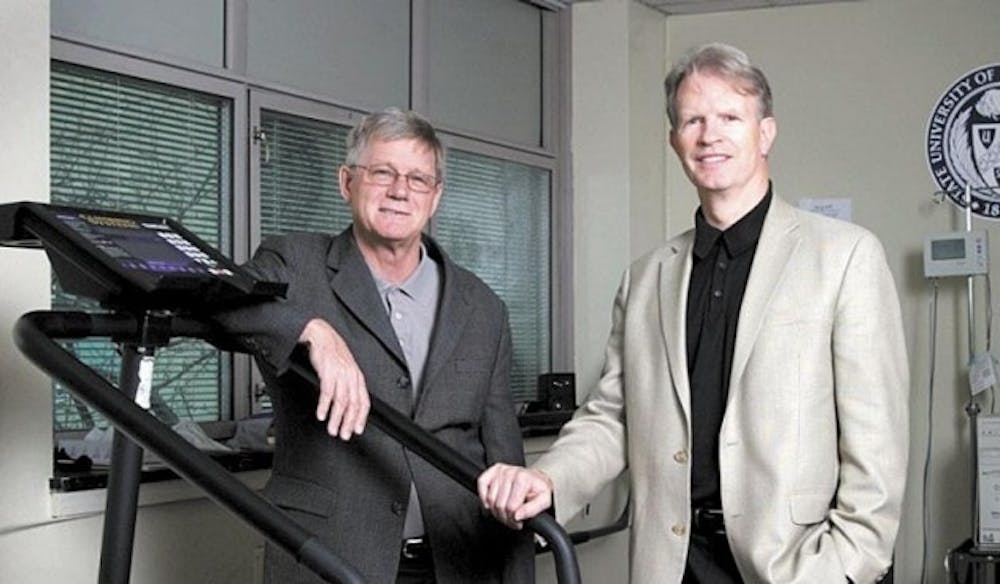Through a 10-year study, the School of Medicine and Biomedical Sciences has proved a new method of treating post-concussion patients.
In January, UB released evidence that proved the effectiveness of an aerobic exercise program in treating athletic and non-athletic patients and restoring normal cognitive function after a concussion.
Research in post-concussion patients began in response to the traditional protocol of dealing with injured athletes, according to Barry Willer, director of research for the UB Concussion Management Clinic and professor of psychiatry. Often athletes were sent home and told to not do anything - even sleep. This protocol was used at UB, Buffalo State College and other universities and high schools despite its strong connection to depression.
"We didn't see any benefit from that," Willer said. "So we decided to try to more systematically evaluate whether or not [the athlete] could exercise at the level of their sport, which [regulates] what is necessary for someone to return to the sport."
The program's patients exercise to determine the highest level of physical effort they can maintain before experiencing concussion symptoms. When that level is found, patients must exercise below it so that symptoms do not continue and future injury is prevented. To measure this effort, patients wear a heart monitor and exercise on a treadmill to measure their heart rates, according to John Leddy, director of the Concussion Management Program and professor of physiology.
Patients can continue this exercise at home or in another health club but return to the clinictwo weeks later after the last visit to review their progress. If there was improvement, the researchers increase the heart rate by five to ten beats per minute and conduct a trial run. This process is repeated until the patient is restored to health. It can take anywhere between four weeks and four months, according to researchers.
To guarantee their safety, patients must be able to exercise between 80 and 90 percent of their maximum ability for 20 minutes at a time without worsening their symptoms. After showing they can exercise at the required rate, patients are allowed to return to their normal routine or sport.
The study is further analyzed in "Exercise Treatment for Post-concussion Syndrome: A Pilot Study of Changes in Functional Magnetic Resonance Imaging Activation, Physiology and Symptoms," a paper Leddy and Willer wrote with other researchers in December. The study included 10 patients, both athletes and non-athletes, who had suffered from concussions and were treated with either an aerobic or stretching exercise. Unlike patients who used the stretching exercise, those who trained aerobically returned to their normal ability more quickly.
In 2007, Tim Connolly, a former center for the Buffalo Sabres, participated in the program to heal an injury and was able to return to the rink within six weeks. Before working with the clinic, "he had been out of hockey for more than a year and wasn't getting better," Leddy said.
The study also proved how post-concussion patients can perform the same functions as uninjured people but use more energy to do so and, as a result, become more physically and mentally exhausted.
The treadmill exercises analyze other problems that post-concussion patients experience, such as difficulty managing emotions, physiology and injuries to other parts of the body.
"The other thing that the treadmill test helps us sort out is [determining] if there are accompanying injuries, like to the neck and to the balance system, which is called the stimulus system," Leddy said. "So, there are other injuries that affect people with concussions that have to be taken into account."
While other aerobic exercises, like going on the elliptical, bicycling and swimming, can help, the treadmill is especially beneficial in treating patients because it is easier for them to control increases in the physical workload, Willer said.
Neck muscles become just as vulnerable as the brain after a concussion and the treadmill encourages the patients to have a straight posture and thus prevents further injuries.
Another great benefit of the aerobic exercise program is that it is proactive, which can alleviate the patients' negative emotions. Patients then feel in control and able to fix their situation, according to Willer.
Willer and Leddy will continue analyzing data to see if there are other approaches to studying brain function and the differences between people with and without post-concussion syndrome. They plan to conduct a bigger exercise trial with stretching programs and functional Magnetic Resonance Imaging tests to see if there are larger changes in the brain that can be rehabilitated with the exercise.
Email: news@ubspectrum.com





